For just two days this weekend, a gallery on New York’s Lower East Side hosted a pop-up French fry exhibition.
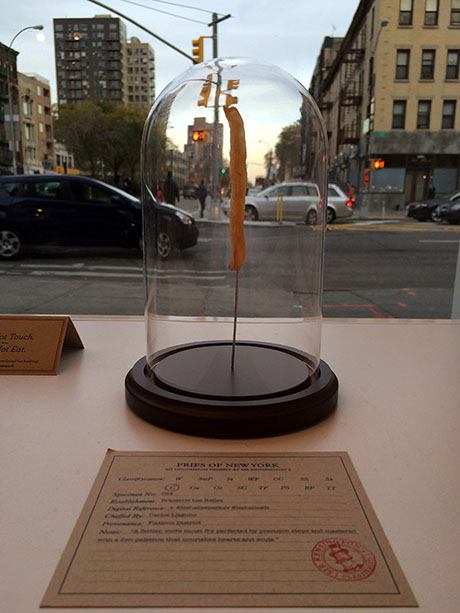
IMAGE: A French fry on the Bowery. All photos in this post by Nicola Twilley.
It was a PR stunt put together by craft condiment contender Sir Kensington, but, as someone who has never successfully resisted a French fry in her life, I couldn’t help but go. Apparently many of my fellow New Yorkers feel a similar fondness for fries: when I visited, the single-room space was more packed than MoMA on a free Friday.

IMAGE: The central table at “Fries of New York.”
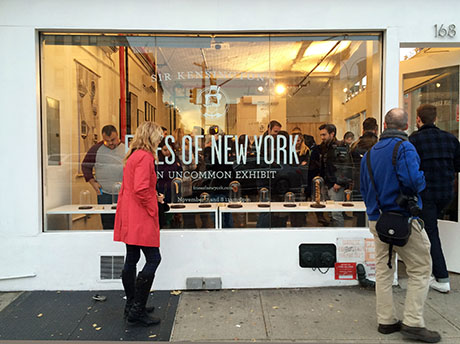
IMAGE: The gallery was packed.
The centrepiece of the exhibit consisted of 100 French fries, each sourced from a New York City restaurant, coated in resin, and mounted on a metal spike in individual bell jars. A label noted the fry’s provenance, classified it according to the curators’ taxonomy (steak, straight cut, string, wedge, curly, waffle, etc.), and included comments from its chef (“Fried at 400 degrees, topped with salt, parmesan, fresh parsley, and white truffle oil”).
A timeline laid out key moments in the history of the French fry and its common accompaniment, ketchup, from the domestication of the potato to the first known published tomato ketchup recipe, written down by Philadelphia surgeon and agricultural scientist James Mease in 1812.
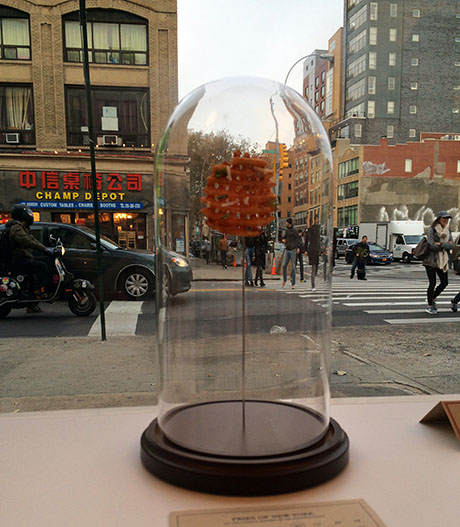
IMAGE: A Parmesan and parsley dusted waffle fry.
To one side sat a rack of various frying oils and a copy of Dennis Bernstein and Warren Lehrer’s award-winning book, French Fries, which takes as its starting point the discovery of an old lady’s dead body, face down in a pool of blood and ketchup.
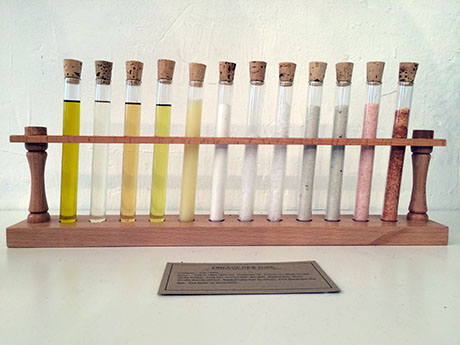
IMAGE: Salts and oils. From left to right: olive oil, sunflower oil, peanut oil, white truffle oil, duck fat, iodized salt, sea salt, Maldon salt, White Truffle salt, Black Truffle salt, Pink Himalayan Sea Salt, and “Fry Spice.”
The display was designed to be Instagram-ready and there was indeed much jostling for the best iPhone angle. Still, people seemed to be spending much more time examining individual fries than the 15 to 30 seconds that researchers have found that museum goers typically spend in front of the greatest works of art.
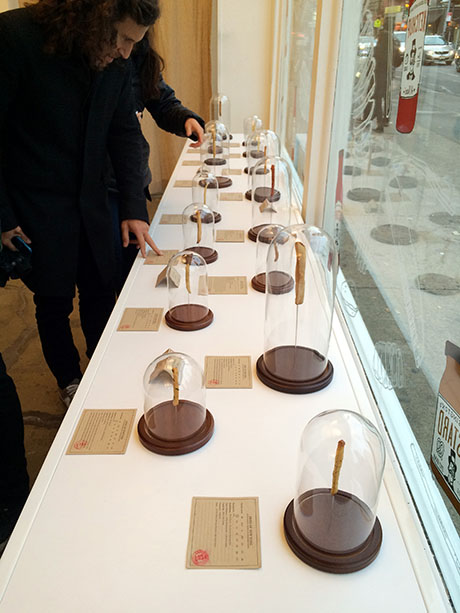
IMAGE: French fry connoisseurship.
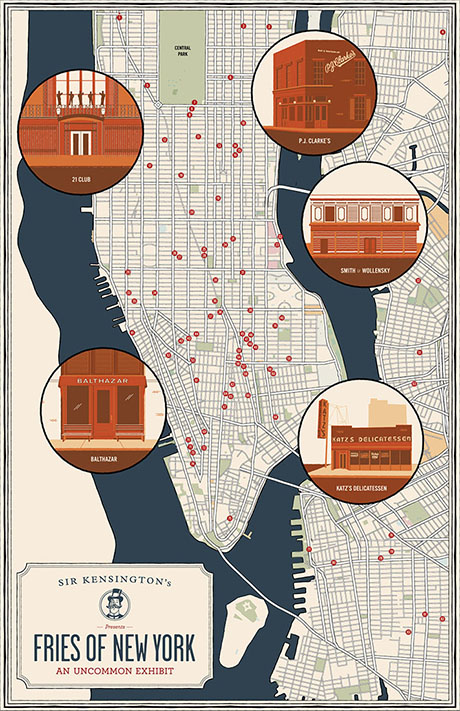
IMAGE: Sir Kensington’s fry-sourcing map.
All gimmickry aside, it was actually fascinating to see the diversity of fried potato shapes and colours available within a mile or two of the gallery. From the processed glory of tater tots and curly fries to the sculpted sophistication of a pomme soufflé, and from the pale yellow bistro fry to the dark brown of a wedge, a vast amount of human ingenuity has clearly been devoted to exploring the full range of formal and flavour possibilities inherent to the combination of oil and potato.
To some, this will undoubtedly provide confirmation of the irreversible decline of American civilisation, but I was rather impressed. Now, if only I could taste all one hundred, side by side…

